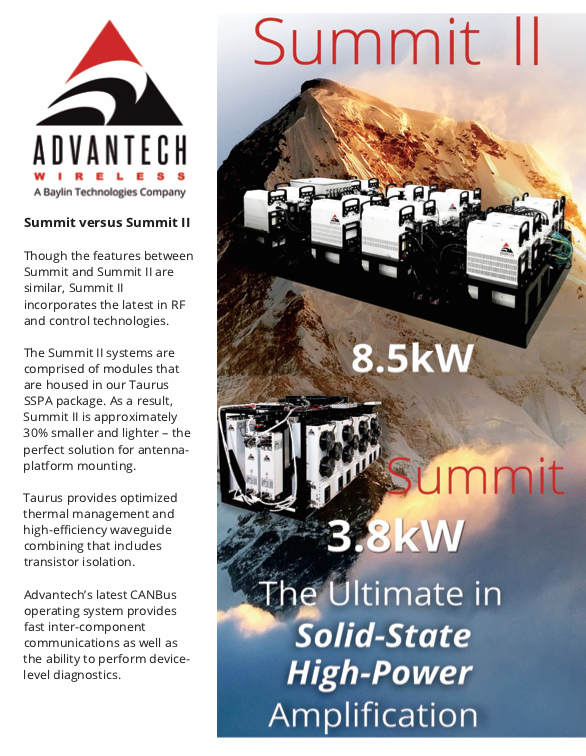One factor humanity must consider in all its space endeavors - from successfully launching a rocket into space, to designing satellites, to plans for future space exploration – is space weather.
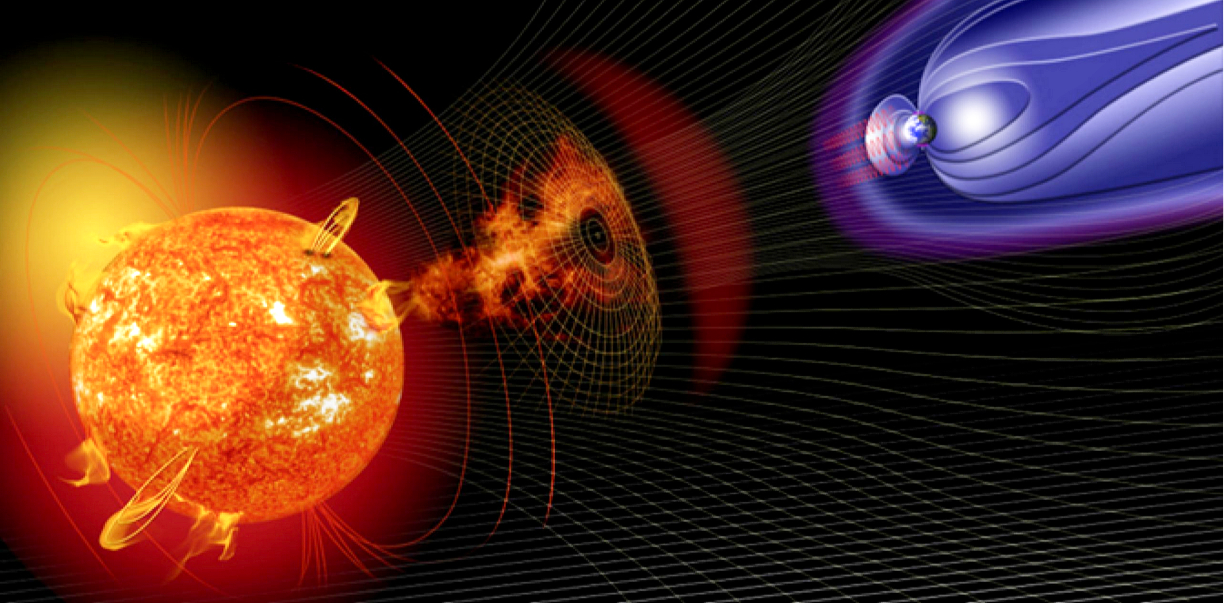
“Just like terrestrial weather is the dynamics of the changing atmosphere, space weather is the dynamics of the space environment: changes in the plasma conditions, the electric and magnetic fields, the electromagnetic radiation, energetic particles,” said Terry Onsager, physicist, the National Oceanic and Atmospheric Administration (NOAA).
“The space environment is mainly a plasma: a charged particle gas consisting of electrons, protons, and some heavy ions,” Onsager said. “The sun is constantly releasing this plasma into space, which is referred to as the solar wind.
“The solar wind is flowing roughly a million miles per hour and fills interplanetary space. In addition, the sun occasionally releases dense portions of its corona, called coronal mass ejections, that flow through the solar wind and can cause the largest space weather storms at Earth.”
This solar wind is electrically charged and magnetized, Onsager said. When the solar wind hits Earth’s ionosphere and upper atmosphere, those electrical currents couple with Earth’s magnetic field, creating the aurora borealis and also heating the upper atmosphere and the ionosphere.
Most people do not notice the effects of space weather, let alone change their daily behavior as they would for a terrestrial weather event, such as a thunderstorm, Onsager noted, adding, “But space weather affects our infrastructure, our satellite fleet, our power grids, airlines,” Onsager explained. “So many of the important things that happen in space weather are behind the scenes, in the resilience of our economic and national security infrastructure, rather than the things we see clearly every day. We will continue to use space more and more, and as we do, knowing the conditions of the environment that you’re operating in will become more and more important.”
At Space Systems Command (SSC), space weather is factored into everything, from satellite and ground system design, to when satellites are launched, to how data collected by satellites is evaluated and analyzed, said Bryan Davis, physical scientist for SSC’s Space Domain Awareness acquisition delta.
“The sun can accelerate protons up to nearly the speed of light in a solar flare,” Davis said. “They’re atomic particles, but once you accelerate them to nearly the speed of light and they hit spacecraft, they can do physical damage to the solar panels or cause internal damage.”
Numerous agencies monitor space weather, including NOAA, NASA, the National Science Foundation, the U.S. Space Force, the Air Force Research Laboratory (AFRL) and other U.S. Department of Defense (DoD) agencies. All of these have varying roles but all work closely together, Onsager said.
“Predicting space weather and its effects can be challenging. Because the sun’s output isn’t steady, all of the interaction between the sun, the solar wind, the Earth’s magnetic field, Earth’s ionosphere and upper atmosphere, is constantly changing,” Onsager explained.
For satellites, space weather poses four main threats, said Bob Rutledge, director of The Aerospace Corporation’s Space Sciences Department. Atmospheric drag in Low Earth Orbit (LEO) that can cause orbital decay; satellite degradation over time from the total amount of radiation it receives; surface or deep charging that can cause parts to fail or corrupt electronic signals, including the ones that command and control the satellite; and single event effects that can severely damage or even destroy satellites.
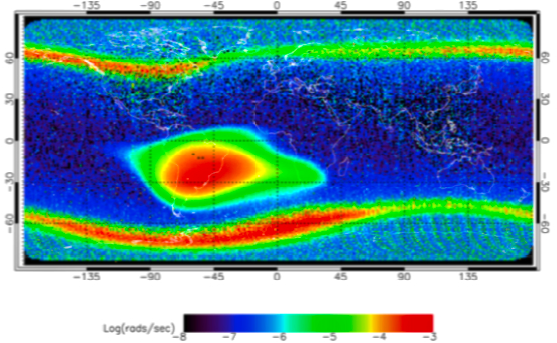
Radiation intensities at 780km as measured on the SSC-funded
Responsive Environmental Assessment Commercially Hosted (REACH)
Project, a hosted radiation environment payload on the Iridium NEXT
satellite constellation. The program was developed to monitor Earth’s
radiation environment in low Earth orbit. Consisting of 32 hosted
sensors on the Iridium NEXT constellation, REACH is a partnership
between the U.S. Air Force, The Aerospace Corporation, Johns
Hopkins Applied Physics Laboratory (APL), Iridium Communications
and Harris Corporation. Artwork courtesy of The Aerospace Corporation.
“There’s a host of radiation hazards for satellites, and they do vary, depending on where you’re flying,” Rutledge said. “If you drop a rock in a pond, you see ripples emanate from it,” Onsager said. “When the ionosphere gets disturbed, it has the equivalent of ripples so that when you try and send your signal to a satellite or receive a signal from one, it can distort your signal and either make it impossible to receive or lose some of the accuracy. For GPS accuracy, it’s very important to know if your signal is potentially degraded and your information could be inaccurate.”
Most people on earth won’t notice a temporary glitch in their GPS, but people who use GPS for precise measurements — such as precision agricultural equipment or a bulldozer using precise coordinates — could be affected, Rutledge said.
With GPS satellites, “one nanosecond of error equals about a foot of error on the ground,” Davis said. “So if you change the timing of the satellite or change the position and it’s thrown off by just a nanosecond, that changes the ground accuracy by a foot. And that’s just one nanosecond. If you go 100 nanoseconds, you’re off by a hundred feet.”
Earth’s magnetic field — which is compressed on the sunward side and extends like a comet’s tail on the anti- sunward side —acts as a protective barrier for people on Earth, Onsager said. But Earth also is circled by the Van Allen radiation belts comprised of trapped energetic charged particles from the solar wind, Rutledge said. These radiation belts can affect everything from GPS satellites to the International Space Station (ISS). “The radiation environment across that space domain, although it differs, can be really challenging for systems,” said Rutledge, who also previously was the lead of the Space Weather Forecast Office at NOAA’s Space Weather Prediction Center, and worked at NASA’s Johnson Space Center as the International Space Station Radiation System Manager.
“If you put more energy into the upper atmosphere, it’s going to get hot and expand,” Onsager said. “This is only a factor for Lower Earth Orbit (LEO) satellites, the ones that are fairly close to Earth and in the upper atmosphere. If the atmosphere gets hot and expands upwards, the density of the atmosphere increases where these satellites are, and that can cause increased drag. Either require maneuvers or the orbit decays and the satellites fall into the atmosphere and burn up.”
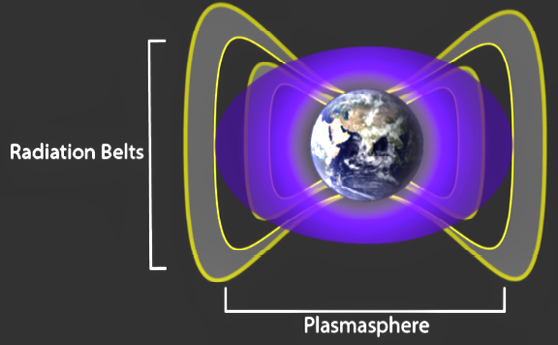
A cloud of cold, charged gas around Earth, called the plasmasphere
and seen here in purple, interacts with the particles in Earth’s radiation
belts — shown in grey— to create an impenetrable barrier that blocks
the fastest electrons from moving in closer to our planet. Image is
courtesy of NASA/Goddard.
In January of 2022, SpaceX launched 49 Starlink satellites into LEO, but around the time they were launched, a geomagnetic storm warmed up the atmosphere and made it denser than anticipated, increasing the drag on the satellites, Rutledge said. Despite attempts to maneuver the satellites by putting them into a low-drag configuration “safe mode,” 40 of them were lost.
“They flew lower than they usually do, and the margins are small in that orbital regime,,” Rutledge said. “The small storm that was well-predicted occurred, and it just ate into that margin. In subsequent launches since that time, they’ve gone back to higher altitudes. This highlights the sensitivity of the space environment: Going to space is hard and there are lots of factors that have to be accounted for,,” said Rutledge.
Satellites in higher orbits, such as GPS satellites in GEO, are not as affected by this atmospheric variability, but space weather there can pose other dangers.
Satellites can start to degrade from the total amount of radiation they receive over time, Rutledge said. There’s also spacecraft charging, which occurs when a charge builds up on the non-conducting material on a spacecraft’s surface or deep inside. Such a charge can lead to a spark, which can either create a false signal or damage the satellite.
Onsager said designers are constantly working on ways to make satellites more resistant to spacecraft charging, but with new innovations such as higher-voltage solar panels and more parts miniaturization; it’s a constant effort to keep up.
“These charging events occur, and when they do, it’s very important to the satellite industry to try to understand what the cause was of this anomalous behavior,” Onsager said. “Was it the space environment, was it some issue with my equipment, or could it have been an adversary? Having knowledge of the space environment in the vicinity of a satellite helps you to be able to attribute that to whatever the most likely cause is,” Onsager said.
Space weather — specifically, solar energetic particles — will also be a critical factor as humanity seeks to extend space exploration to cislunar regions and beyond. Solar energetic particles — very high energy protons and heavy ions that can be accelerated near the sun and in interplanetary space — are often associated with coronal mass ejections from the sun, Onsager said.
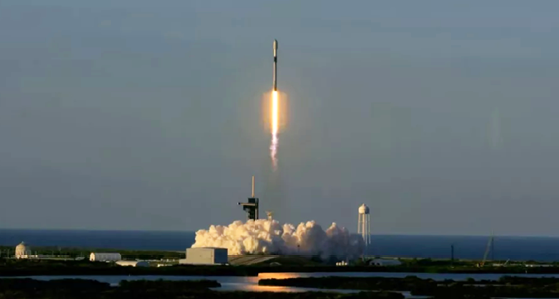
The SpaceX launch of 43 Starlink satellites aboard a Falcon 9 launch
vehicle in January of 2022. Image is courtesy of SpaceX on Youtube.
“There are two aspects of radiation that are important,” Onsager said. “One is the galactic cosmic rays that are always there, and there’s not much you can do about them. The levels go up and down fairly smoothly with the 11-year (solar) cycle. That would be a concern for the Mars missions, when you’re going to be out of the protection (of Earth’s magnetic field) for a long time.”
“And then there are the occasional solar energy particle bursts — so there’s a slowly varying background, and on top of that are these episodic solar energy particle events that get accelerated near the sun and through the coronal mass ejections as they propagate out into the solar wind.”
The sun began a new solar cycle in 2019 and the peak is predicted for the summer of 2025, Onsager said. While large solar storms can occur at any time during the solar cycle, they are more likely to occur during the solar maximum, which could mean more large solar proton events that will affect spacecraft operations.
“We’re not very good at predicting the exact timing or intensity of solar cycles,” Rutledge said. “Usually, what you see is a fast rise to solar maximum and then a slow decay to solar minimum. However, when you look at the very big space weather events, the takeaway is that big events can happen at any time and independent of solar cycle size. Even though the overall trend in solar activity is up, exactly when a big or notable space weather event will happen is still anybody’s guess, because those aren’t well-correlated.”
Onsager said there remains an enormous amount to discover about space weather, with many phenomena that still puzzle scientists. One such puzzle is trying to accurately predict when a coronal mass ejection will occur.
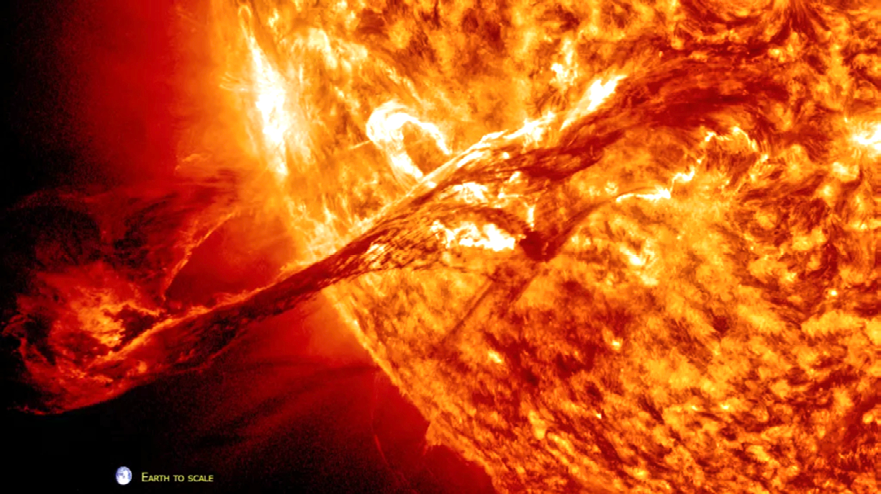
The sun launched this coronal mass ejection at some 900 miles/second
(nearly 1,500 km/s) on Aug. 31, 2012. The Earth is not this close to the
sun; the image is for scale purposes only. Image credit: NASA.
“You can see these sunspots, these regions where you know a lot of energy is building up, but we can’t predict accurately exactly when that energy will be released,” Onsager said. “When it does erupt, we have measurements that can get a pretty good estimate of the initial trajectory of the coronal mass ejection as it’s leaving the sun. However, once it gets out of the field of view of these instruments, then we have no measurement until it gets just upstream from Earth, and that can be a couple of days.”
Exactly how much of that coronal mass ejection gets coupled with Earth’s system also depends on the direction of the magnetic field in the ejection, but that’s difficult to predict as well, Onsager said.
“We don’t know for sure what the magnetic field is going to be until it hits the L1 Lagrange point which, in a fast solar wind, could be 30 to 40 minutes lead time before it really starts impacting our near-Earth environment,” Onsager said.
NASA, NOAA, the United Kingdom and the European Space Agency (ESA) are working to develop a spacecraft that would be stationed at the L5 Lagrange point in order to observe coronal mass ejections from the side, to provide better warnings, Onsager said.
“One of the things that makes space weather very challenging, but also very exciting, is so much of it is still in the basic research mode,” Onsager said. “Over the past 20 years or so, as space weather has gotten more and more important, it’s really emphasized the effort needed to take the basic science knowledge we have, and to extract as much actionable information as possible from it.”


